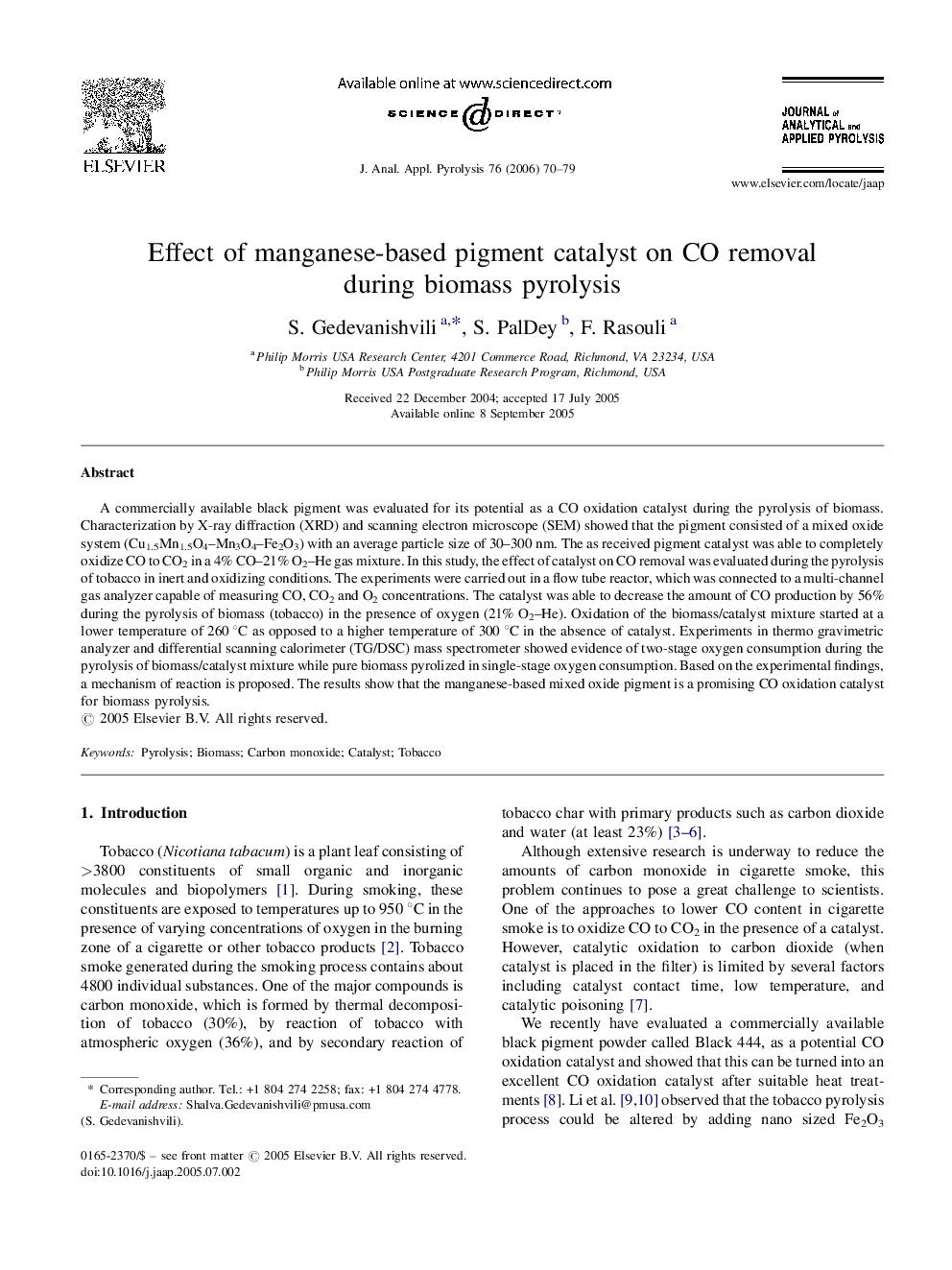| Article ID | Journal | Published Year | Pages | File Type |
|---|---|---|---|---|
| 1198203 | Journal of Analytical and Applied Pyrolysis | 2006 | 10 Pages |
A commercially available black pigment was evaluated for its potential as a CO oxidation catalyst during the pyrolysis of biomass. Characterization by X-ray diffraction (XRD) and scanning electron microscope (SEM) showed that the pigment consisted of a mixed oxide system (Cu1.5Mn1.5O4–Mn3O4–Fe2O3) with an average particle size of 30–300 nm. The as received pigment catalyst was able to completely oxidize CO to CO2 in a 4% CO–21% O2–He gas mixture. In this study, the effect of catalyst on CO removal was evaluated during the pyrolysis of tobacco in inert and oxidizing conditions. The experiments were carried out in a flow tube reactor, which was connected to a multi-channel gas analyzer capable of measuring CO, CO2 and O2 concentrations. The catalyst was able to decrease the amount of CO production by 56% during the pyrolysis of biomass (tobacco) in the presence of oxygen (21% O2–He). Oxidation of the biomass/catalyst mixture started at a lower temperature of 260 °C as opposed to a higher temperature of 300 °C in the absence of catalyst. Experiments in thermo gravimetric analyzer and differential scanning calorimeter (TG/DSC) mass spectrometer showed evidence of two-stage oxygen consumption during the pyrolysis of biomass/catalyst mixture while pure biomass pyrolized in single-stage oxygen consumption. Based on the experimental findings, a mechanism of reaction is proposed. The results show that the manganese-based mixed oxide pigment is a promising CO oxidation catalyst for biomass pyrolysis.
